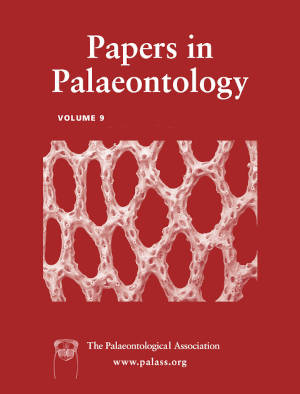Reg. Charity No. 1168330

Abstract Moradisaurine captorhinid eureptiles are one of the best-known groups of Permian herbivorous tetrapods. Moradisaurines, with several rows of teeth on the maxillae and jaws, first appeared in the Cisuralian and went extinct at the end of the Lopingian; they were especially abundant in the equatorial latitudes of Pangaea. However, the postcranial skeleton of this clade is relatively poorly known, given that most of the species described have been based on skulls. This fact has precluded a detailed correlation with coeval tracks. The present work describes a new moradisaurine genus and species, Tramuntanasaurus tiai, based on an almost complete, semi-articulated skeleton from the Port des Canonge Formation of Mallorca (Balearic Islands, western Mediterranean), identifying it as the trackmaker of the co-occurring small-sized traces of the ichnogenus Hyloidichnus. Apart from documenting the new moradisaurine species, the results presented herein strongly support the hypothesis that Hyloidichnus was produced by both non-moradisaurine captorhinids and moradisaurines; those of small to medium size, at least, had a very conserved autopodial morphology and gait. Therefore, this study provides new data to infer the trackmakers of Hyloidichnus where bone remains are missing, and thus contributes to our understanding of Permian tetrapod ichnofaunas and tetrapod communities.